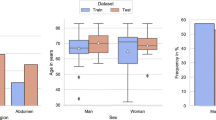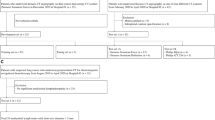Abstract
Purpose
The usage of iodinated contrast media (ICM) can improve the sensitivity and specificity of computed tomography (CT) for many clinical indications. However, the adverse effects of ICM administration can include renal injury, life-threatening allergic-like reactions, and environmental contamination. Deep learning (DL) models can generate full-dose ICM CT images from non-contrast or low-dose ICM administration or generate non-contrast CT from full-dose ICM CT. Eliminating the need for both contrast-enhanced and non-enhanced imaging or reducing the amount of required contrast while maintaining diagnostic capability may reduce overall patient risk, improve efficiency and minimize costs. We reviewed the current capabilities of DL to reduce the need for contrast administration in CT.
Methods
We conducted a systematic review of articles utilizing DL to reduce the amount of ICM required in CT, searching MEDLINE, Embase, Compendex, Inspec, and Scopus to identify papers published from 2016 to 2022. We classified the articles based on the DL model and ICM reduction.
Results
Eighteen papers met the inclusion criteria for analysis. Of these, ten generated synthetic full-dose (100%) ICM from real non-contrast CT, while four augmented low-dose to full-dose ICM CT. Three used DL to create synthetic non-contrast CT from real 100% ICM CT, while one paper used DL to translate the 100% ICM to non-contrast CT and vice versa. DL models commonly used generative adversarial networks trained and tested by paired contrast-enhanced and non-contrast or low ICM CTs. Image quality metrics such as peak signal-to-noise ratio and structural similarity index were frequently used for comparing synthetic versus real CT image quality.
Conclusion
DL-generated contrast-enhanced or non-contrast CT may assist in diagnosis and radiation therapy planning; however, further work to optimize protocols to reduce or eliminate ICM for specific pathology is still needed along with a dedicated assessment of the clinical utility of these synthetic images.



Similar content being viewed by others
References
Cavallo J, Pachade J (2022) Practice management strategies for imaging facilities facing an acute iodinated contrast media shortage. AJR. https://doi.org/10.2214/AJR.22.27969
Horný M, Saindane AM, Duszak R (2022) Clinical characteristics of most frequent use of iodinated contrast media for CT. AJR. https://doi.org/10.2214/ajr.22.28010
Kim SW, Kim JH, Kwak S, Seo M, Ryoo C, Shin C, Jang S, Cho J, Kim YH, Jeon K (2021) The feasibility of deep learning-based synthetic contrast-enhanced CT from nonenhanced CT in emergency department patients with acute abdominal pain. Sci Rep 11:20390. https://doi.org/10.1038/s41598-021-99896-4
Baerlocher MO, Asch M, Myers A (2010) Allergic-type reactions to radiographic contrast media. CMAJ 182(12):1328. https://doi.org/10.1503/cmaj.090371
Mohammed NM, Mahfouz A, Achkar K, Rafie IM, Hajar R (2013) Contrast-induced nephropathy. Heart Views 14(3):106–116. https://doi.org/10.4103/1995-705X.125926
Tu LH, Miller JE, Forman HP (2022) The critical shortage of iodinated contrast material—will value prevail? N Engl J Med 387:491–493. https://doi.org/10.1056/nejmp2206996
Dekker HM, Stroomberg GJ, Prokop M (2022) Tackling the increasing contamination of the water supply by iodinated contrast media. Insights Imaging 13:30. https://doi.org/10.1186/s13244-022-01175-x
McCollough CH, Leng S, Yu L, Fletcher JG (2015) Dual- and multi-energy CT: principles, technical approaches, and clinical applications. Radiology 276(3):637–653. https://doi.org/10.1148/radiol.2015142631
Willemink MJ, Noël PB (2019) The evolution of image reconstruction for CT—from filtered back projection to artificial intelligence. Eur Radiol 29(5):2185–2195. https://doi.org/10.1007/s00330-018-5810-7
Santini G, Zumbo LM, Martini N, Valvano G, Leo A, Ripoli A, Avogliero F, Chiappino D, Latta DD (2018) Synthetic contrast enhancement in cardiac CT with deep learning. https://doi.org/10.48550/arXiv.1807.01779
Chandrashekar A, Shivakumar N, Lapolla P, Handa A, Grau V, Lee R (2020) A deep learning approach to generate contrast-enhanced computerised tomography angiograms without the use of intravenous contrast agents. Eur Heart J 41(2):156. https://doi.org/10.1093/ehjci/ehaa946.0156
Chun J, Chang JS, Oh C, Park IK, Choi MS, Hong CS, Kim H, Yang G, Moon JY, Chung SY, Suh YJ, Kim JS (2022) Synthetic contrast-enhanced computed tomography generation using a deep convolutional neural network for cardiac substructure delineation in breast cancer radiation therapy: a feasibility study. Radiat Oncol 17:83. https://doi.org/10.1186/s13014-022-02051-0
Liu J, Tian Y, Ağıldere AM, Haberal KM, Coşkun M, Duzgol C, Oguz A (2020) DyeFreeNet: deep virtual contrast CT synthesis. Lect Notes Comput Sci 12417:80–89. https://doi.org/10.1007/978-3-030-59520-3_9
Seo M, Kim D, Lee K, Hong S, Bae JS, Kim JH, Kwak S (2021) Neural contrast enhancement of CT image. IEEE Winter Conf Appl Comput Vis (WACV) 2021:3972–3981. https://doi.org/10.1109/WACV48630.2021.00402
Chandrashekar A, Handa A, Lapolla P, Shivakumar N, Uberoi R, Grau V, Lee R (2021) A deep learning approach to visualise aortic aneurysm morphology without the use of intravenous contrast agents. Ann Surg. https://doi.org/10.1097/sla.0000000000004835
Xie H, Lei Y, Wang T, Patel P, Curran WJ, Liu T, Tang X, Yang X (2021) Generation of contrast-enhanced CT with residual cycle-consistent generative adversarial network (Res-CycleGAN). SPIE Med Imaging. DOI 10(1117/12):2581056
Hu T, Oda M, Hayashi Y, Lu Z, Kumamaru KK, Akashi T, Aoki S, Mori K (2022) Aorta-aware GAN for non-contrast to artery contrasted CT translation and its application to abdominal aortic aneurysm detection. Int J Comput Assist Radiol Surg 17:97–105. https://doi.org/10.1007/s11548-021-02492-0
Choi JW, Cho YJ, Ha JY, Lee SB, Lee S, Choi YH, Cheon JE, Kim WS (2021) Generating synthetic contrast enhancement from non-contrast chest computed tomography using a generative adversarial network. Sci Rep 11:20403. https://doi.org/10.1038/s41598-021-00058-3
Haubold J, Hosch R, Umutlu L, Wetter A, Haubold P, Radbruch A, Forsting M, Nensa F, Koitka S (2021) Contrast agent dose reduction in computed tomography with deep learning using a conditional generative adversarial network. Eur Radiol 31:6087–6095. https://doi.org/10.1007/s00330-021-07714-2
Haubold J, Jost G, Theysohn JM, Ludwig JM, Li Y, Kleesiek J, Schaarschmidt BM, Forsting M, Nensa F, Pietsch H, Hosch R (2022) Contrast media reduction in computed tomography with deep learning using a generative adversarial network in an experimental animal study. Invest Radiol 57(10):696–703. https://doi.org/10.1097/RLI.0000000000000875
Zhou Z, Gao Y, Zhang W, Bo K, Zhang N, Wang H, Wang R, Du Z, Firmin D, Yang G, Zhang H, Xu L (2022) Artificial intelligence-based full aortic CT angiography imaging with ultra-low-dose contrast medium: a preliminary study. Eur Radiol 33:678–689. https://doi.org/10.1007/s00330-022-08975-1
Zhang W, Zhou Z, Gao Z, Yang G, Xu L, Wu W, Zhang H (2022) Multiple adversarial learning based angiography reconstruction for ultra-low-dose contrast medium CT. IEEE J Biomed Health Inform. https://doi.org/10.1109/JBHI.2022.3213595
Sumida I, Magome T, Kitamori H, Das IJ, Yamaguchi H, Kizaki H, Aboshi K, Yamashita K, Yamada Y, Seo Y, Isohashi F, Ogawa K (2019) Deep convolutional neural network for reduction of contrast-enhanced region on CT images. J Radiat Res 60(5):586–594. https://doi.org/10.1093/jrr/rrz030
Koike Y, Ohira S, Akino Y, Sagawa T, Yagi M, Ueda Y, Miyazaki M, Sumida I, Teshima T, Ogawa K (2019) Deep learning-based virtual non-contrast CT for volumetric modulated arc therapy planning: comparison with a dual-energy CT-based approach. Med Phys 47(2):371–379. https://doi.org/10.1002/mp.13925
Liugang G, Kai X, Chunying L, Zhengda L, Jianfeng S, Tao L, Xinye N, Jianrong D (2020) Generation of virtual non-contrast CT from intravenous enhanced CT in radiotherapy using convolutional neural networks. Front Oncol 10:1715. https://doi.org/10.3389/fonc.2020.01715
Ristea N-C, Miron A-I, Savencu O, Georgescu M-I, Verga N, Khan FS, Ionescu RT (2021) CyTran: cycle-consistent transformers for non-contrast to contrast CT translation. https://doi.org/10.48550/arXiv.2110.06400
Sharma N, Aggarwal LM (2010) Automated medical image segmentation techniques. J Med Phys 35(1):3–14. https://doi.org/10.4103/0971-6203.58777
Wan R, Li M (2003) An overview of medical image registration. In: Proceedings fifth international conference on computational intelligence and multimedia applications (ICCIMA 2003), pp 385–390. https://doi.org/10.1109/ICCIMA.2003.1238156
Chlap P, Min H, Vandenberg N, Dowling J, Holloway L, Haworth A (2021) A review of medical image data augmentation techniques for deep learning applications. J Med Imaging Radiat Oncol 65(5):545–563. https://doi.org/10.1111/1754-9485.13261
Fitsch H, Friedrich K (2018) Digital matters: processes of normalization in medical imaging. Catalyst 4:2. https://doi.org/10.28968/cftt.v4i2.29911
Brady SL, Kaufman RA (2012) Investigation of American Association of Physicists in Medicine Report 204 size-specific dose estimates for pediatric CT implementation. Radiology 265(3):832–840. https://doi.org/10.1148/radiol.12120131
Elicker BM, Cypel YS, Weinreb JC (2006) IV contrast administration for CT: a survey of practices for the screening and prevention of contrast nephropathy. AJR Am J Roentgenol 186(6):1651–1658. https://doi.org/10.2214/AJR.05.0407
Callahan MJ, Servaes S, Lee EY, Towbin AJ, Westra SJ, Frush DP (2014) Practice patterns for the use of iodinated IV contrast media for pediatric CT studies: a survey of the Society for Pediatric Radiology. AJR Am J Roentgenol 202(4):872–879. https://doi.org/10.2214/AJR.13.11106
Lenga L, Albrecht MH, Othman AE, Martin SS, Leithner D, D’Angelo T, Arendt C, Scholtz JE, De Cecco CN, Schoepf UJ, Vogl TJ, Wichmann JL (2017) Monoenergetic dual-energy computed tomographic imaging: cardiothoracic applications. J Thorac Imaging 32(3):151–158. https://doi.org/10.1097/RTI.0000000000000259
Benz DC, Gräni C, Hirt Moch B, Mikulicic F, Vontobel J, Fuchs TA, Stehli J, Clerc OF, Possner M, Pazhenkottil AP, Gaemperli O, Buechel RR, Kaufmann PA (2016) Minimized radiation and contrast agent exposure for coronary computed tomography angiography: first clinical experience on a latest generation 256-slice scanner. Acad Radiol 23(8):1008–1014. https://doi.org/10.1016/j.acra.2016.03.015
Grob D, Smit E, Prince J, Kist J, Stöger L, Geurts B, Snoeren MM, Dijk RV, Oostveen LJ, Prokop M, Schaefer-Prokop CM, Sechopoulos I, Brink M (2019) Iodine maps from subtraction CT or dual-energy CT to detect pulmonary emboli with CT angiography: a multiple-observer study. Radiology 292:197–205. https://doi.org/10.1148/radiol.2019182666
Higaki T, Nakamura Y, Zhou J, Yu Z, Nemoto T, Tatsugami F, Awai K (2020) Deep learning reconstruction at CT: phantom study of the image characteristics. Acad Radiol 27(1):82–87. https://doi.org/10.1016/j.acra.2019.09.008
Pasquini L, Napolitano A, Pignatelli M, Tagliente E, Parrillo C, Nasta F, Romano A, Bozzao A, Di Napoli A (2022) Synthetic post-contrast imaging through artificial intelligence: clinical applications of virtual and augmented contrast media. Pharmaceutics 14(11):2378. https://doi.org/10.3390/pharmaceutics14112378
Muhamedrahimov R, Bar A, Laserson J, Akselrod-Ballin A, Elnekave E (2022) Using machine learning to identify intravenous contrast phases on computed tomography. Comput Methods Progr Biomed 215:106603. https://doi.org/10.1016/j.cmpb.2021.106603
Agniel D, Kohane IS, Weber GM (2018) Biases in electronic health record data due to processes within the healthcare system: retrospective observational study. BMJ. https://doi.org/10.1136/bmj.k1479
Miller DD (2019) The medical AI insurgency: what physicians must know about data to practice with intelligent machines. npj Digit Med 2:62. https://doi.org/10.1038/s41746-019-0138-5
Acknowledgements
We would like to acknowledge the kind assistance of Li Zhang, MLIS, for creating and running the literature search string, and Ekta Walia, Ph.D. for proofreading the article. We gratefully acknowledge funding support for this research from the Saskatchewan Health Research Foundation. Figures 2 and 3 of this manuscript are created using BioRender.
Author information
Authors and Affiliations
Corresponding author
Ethics declarations
Conflict of interest
The authors declare that they have no conflict of interest.
Ethical approval
The ethical standard and informed consent are not applicable to this study.
Additional information
Publisher's Note
Springer Nature remains neutral with regard to jurisdictional claims in published maps and institutional affiliations.
Rights and permissions
Springer Nature or its licensor (e.g. a society or other partner) holds exclusive rights to this article under a publishing agreement with the author(s) or other rightsholder(s); author self-archiving of the accepted manuscript version of this article is solely governed by the terms of such publishing agreement and applicable law.
About this article
Cite this article
Azarfar, G., Ko, SB., Adams, S.J. et al. Applications of deep learning to reduce the need for iodinated contrast media for CT imaging: a systematic review. Int J CARS 18, 1903–1914 (2023). https://doi.org/10.1007/s11548-023-02862-w
Received:
Accepted:
Published:
Issue Date:
DOI: https://doi.org/10.1007/s11548-023-02862-w




